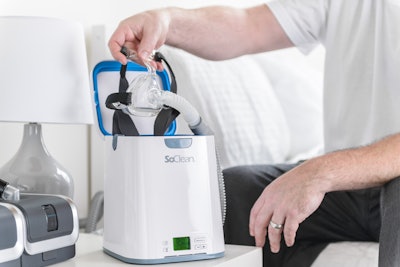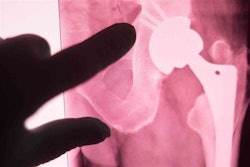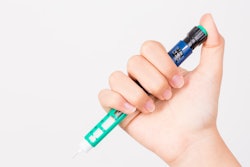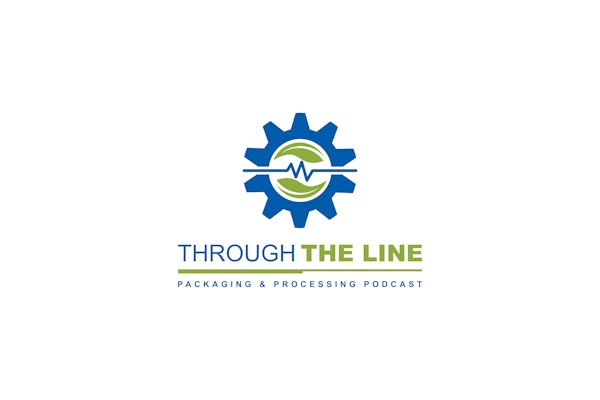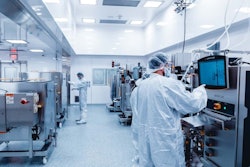As demand for home healthcare continues to grow, more companies are designing products, instructions and packaging for a lay audience.
Many patients with obstructive sleep apnea and other sleep disorders use a CPAP (continuous positive airway pressure) machine at home when they sleep, which consists of a flow generator, hose and mask. It is important to sanitize the equipment as it interacts directly with the user’s respiratory system, but these parts can be difficult to keep clean.
SoClean has introduced an automated way for CPAP users to sanitize their equipment at home, and worked to make the packaging, setup and product design user-friendly.
Jess Cormier, Director of Marketing at SoClean, explains that its packaging was designed by the in-house team and the manufacturer. The cleaning unit is packaged within two corrugated boxes. One is dedicated for shipping and is a double-wall cushioned box. The inside box is a printed retail box with a full-color label on a single-wall corrugated box.
“We have specifically designed shock-absorbing foam pieces where the SoClean rests, creating a space around the product to allow for movement during the shipping process,” she says. “Within the packaging we have dedicated spaces in the foam pieces that allow the product accessories and supplies to have a custom fit. This ensures that those pieces remain in place during shipping, permitting the customer to easily identify them upon opening the package.”
At-home assembly and instructions
SoClean requires a simple one-time setup with the user’s CPAP machine. “Most machines on the market use a SoClean-manufactured adapter to provide that simple one-time install of the SoClean unit to the CPAP machine,” Cormier notes. After this one-time setup has been completed, the SoClean device can be run daily with minimal effort from the user.
When the product is geared toward a lay audience (i.e. those without a nursing or healthcare background), there are different challenges in developing instructions. Cormier says, “We did find a learning curve for our instructions because of the type of market we were selling to. SoClean continues to rework our instructions to make it easier for users to easily setup and use the machine on their own without customer support help.” She says what greatly improved customer satisfaction were the detailed videos they developed that mimic the manual. These video instructions are referenced in the manual, on the SoClean website and are also used as tools with the customer service team.
Versatile design
The SoClean was co-designed by an outside firm and the company’s internal R&D department. In designing a device that fits a variety of CPAP masks, the company took many different situations into account. “For example, you’ll notice that the SoClean has two different side ports where the CPAP hose can lay. The thought process behind that is so a CPAP user can comfortably use the SoClean no matter which side of the bed they may sleep on,” Cormier explains. “In addition, the size of the chamber is built around the largest common CPAP mask size. By doing this we know that 99% of CPAP users market can fit their mask into the SoClean machine, while still being able to place the SoClean on their bedside table.”
SoClean also took the consumer’s view of color preference into consideration, reaching out to survey panel users on CPAP therapy and asking them what color they envisioned the SoClean to be. SoClean analyzed the data and determined which color the unit should be according to popular demand.
Design considerations for sanitization
SoClean generates a natural gas for sanitizing called ozone (O3). “While this gas is very safe and powerful, it is a known oxidizer. CPAP equipment is made from ozone-resistant materials and we needed to make sure all components of the SoClean were ozone-resistant, since we would be self-generating this gas for the sanitizing process on a daily basis,” says Cormier. “This not only meant that the inside of the unit needed to be made from ozone-resistant materials, but also the seals around the lid, the hose that injects the ozone and even the adapters needed be considered.”
SoClean is a closed system, which means that the ozone is generated in a sealed environment. Ozone starts inside the water chamber of the CPAP unit, flows through the hose and surrounds the mask, flooding the inside of the SoClean chamber. Cormier explains, “We have special seals around the lid of the SoClean that prevent the gas from escaping, maintaining the necessary sanitizing levels. Lastly, we have a built-in filtration system that prevents ozone from escaping the machine by forcing it through a filter, which automatically breaks down the ozone (O3) back into breathable oxygen (O2).”
